Accuracy Improvement in Resolver Offset Detection Based on Angle Tracking Observer with Coordinate Transformation
Abstract
:1. Introduction
2. Resolver to Digital Converter
2.1. Method to Detecting Position with Resolver
2.2. Angle Tracking Observer (ATO)
3. Resolver Offset Detection Method
3.1. A-Phase, Theta Zero-Cross Point Detection Method
3.2. Detection Method with Coordinate Transformation
4. The Result of the Experiment and Analysis
4.1. The Result of the Experiment
4.2. Analysis of the Experiment
5. Conclusions
Author Contributions
Funding
Conflicts of Interest
References
- Shao, L.; Karci, A.E.H.; Tavernini, D.; Sorniotti, A.; Cheng, M. Design Approaches and Control Strategies for Energy-Efficient Electric Machines for Electric Vehicles—A Review. IEEE Access 2020, 8, 5639–5646. [Google Scholar] [CrossRef]
- Khanh, P.Q.; Truong, V.A.; Anh, H.P.H. Extended Permanent Magnet Synchronous Motors Speed Range Based on the Active and Reactive Power Control of Inverters. Energies 2021, 14, 3549. [Google Scholar] [CrossRef]
- Kang, L.; Jiang, D.; Xia, C.; Xu, Y.; Sun, K. Research and Analysis of Permanent Magnet Transmission System Controls on Diesel Railway Vehicles. Electronics 2021, 10, 173. [Google Scholar] [CrossRef]
- Park, G.; Kim, G.; Gu, B.-G. Sensorless PMSM Drive Inductance Estimation Based on a Data-Driven Approach. Electronics 2021, 10, 791. [Google Scholar] [CrossRef]
- Kim, D.-Y.; Lee, J.-H. Low Cost Simple Look-Up Table-Based PMSM Drive Considering DC-Link Voltage Variation. Energies 2020, 13, 3904. [Google Scholar] [CrossRef]
- Datlinger, C.; Hirz, M. Benchmark of Rotor Position Sensor Technologies for Application in Automotive Electric Drive Trains. Electronics 2020, 9, 1063. [Google Scholar] [CrossRef]
- Datlinger, C.; Hirz, M. An Extended Approach for Validation and Optimization of Position Sensor Signal Processing in Electric Drive Trains. Electronics 2019, 8, 77. [Google Scholar] [CrossRef] [Green Version]
- Gaechter, J.; Hirz, M. Evaluation and Modeling of Rotor Position Sensor Characteristics for Electric Traction Motors. SAE Tech. Pap. 2016. [Google Scholar] [CrossRef]
- Datlinger, C.; Hirz, M. Investigations of Rotor Shaft Position Sensor Signal Processing in Electric Drive Train Systems. In Proceedings of the 2018 IEEE Transportation Electrification Conference and Expo, Asia-Pacific (ITEC Asia-Pacific), Bangkok, Thailand, 6–9 June 2018; pp. 1–5. [Google Scholar]
- Hwang, S.; Kim, H.; Kim, J.; Liu, L.; Li, H. Compensation of Amplitude Imbalance and Imperfect Quadrature in Resolver Signals for PMSM Drives. IEEE Trans. Ind. Appl. 2011, 47, 134–143. [Google Scholar] [CrossRef]
- Jin, C.-S.; Jang, I.-S.; Bae, J.-N.; Lee, J.; Kim, W.-H. Proposal of improved winding method for VR resolver. IEEE Trans. Magn. 2015, 51, 1–4. [Google Scholar]
- Idkhajine, L.; Monmasson, E.; Naouar, M.W.; Prata, A.; Bouallaga, K. Fully Integrated FPGA-Based Controller for Synchronous Motor Drive. IEEE Trans. Ind. Electron. 2009, 56, 4006–4017. [Google Scholar] [CrossRef]
- Bang, J.S.; Kim, T.S. Automatic calibration of a resolver offset of permanent magnet synchronous motors for hybrid electric vehicles. In Proceedings of the 2015 American Control Conference (ACC), Chicago, IL, USA, 1–3 July 2015; pp. 4174–4179. [Google Scholar]
- Noori, N.; Khaburi, D.A. Diagnosis and compensation of amplitude imbalance, imperfect quadrant and offset in resolver signals. In Proceedings of the 2016 7th Power Electronics and Drive Systems Technologies Conference (PEDSTC), Tehran, Iran, 16–18 February 2016; pp. 76–81. [Google Scholar]
- Katakura, M.; Toda, A.; Takagi, Y.; Suzuki, N.; Kadoyama, T.; Kushihara, H. A 12-bits resolver-to-digital converter using complex twin PLL for accurate mechanical angle measurement. In Proceedings of the Digest of Technical Papers. 2005 Symposium on VLSI Circuits, Kyoto, Japan, 16–18 June 2005; pp. 236–239. [Google Scholar]
- Wu, Z.; Li, Y. High-Accuracy Automatic Calibration of Resolver Signals via Two-Step Gradient Estimators. IEEE Sens. J. 2018, 18, 2883–2891. [Google Scholar] [CrossRef]
- Shinnaka, S.; Takeuchi, S. A New Sensorless Drive Control System for Transmissionless EVs Using a Permanent-Magnet Synchronous Motor. World Electr. Veh. J. 2007, 2007, 1–9. [Google Scholar] [CrossRef]
- Bae, B.H.; Sul, S.K.; Kwon, J.H.; Byeon, J.S. Implementation of sensorless vector control for super-high-speed PMSM of turbo-compressor. IEEE Trans. Ind. Appl. 2003, 39, 811–818. [Google Scholar] [CrossRef]
- García, R.C.; Pinto, J.O.P.; Belini, A.B. Estimation of Angular Speed and Park Matrix from Resolver Position Sensor Signals without Using Trigonometric Functions. In Proceedings of the 2018 IEEE XXV International Conference on Electronics, Electrical Engineering and Computing (INTERCON), Lima, Peru, 8–10 August 2018; pp. 1–4. [Google Scholar]

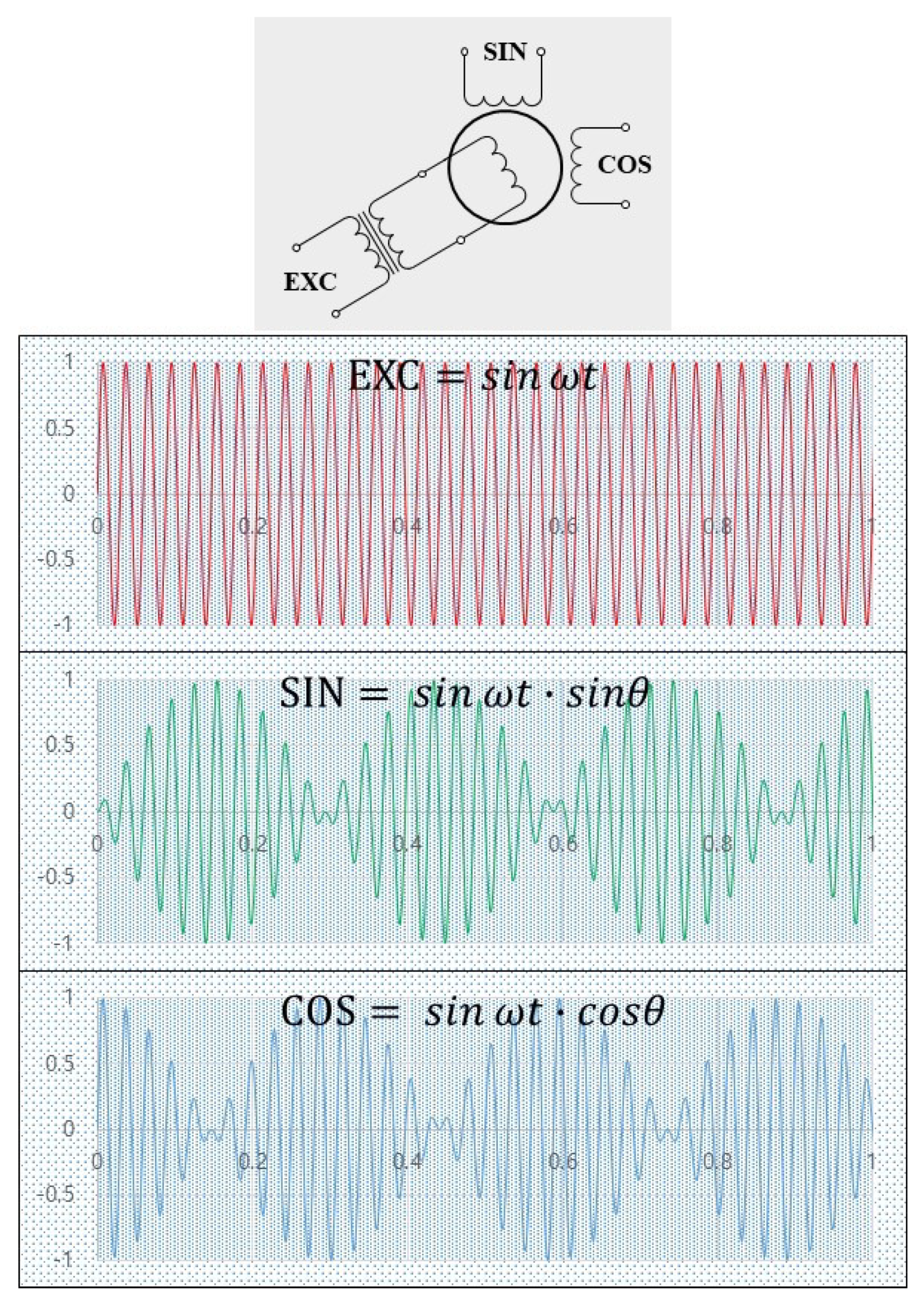
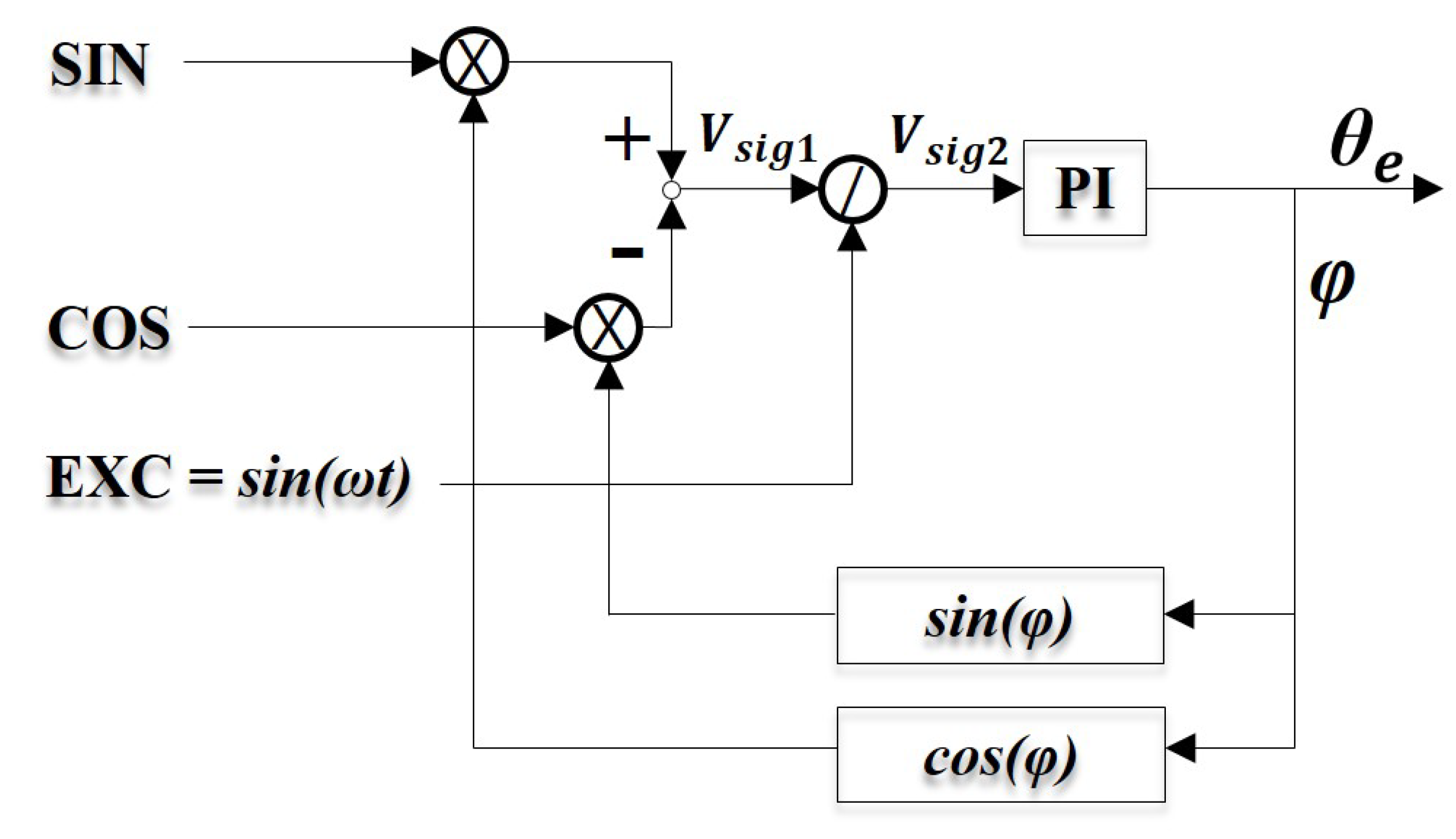

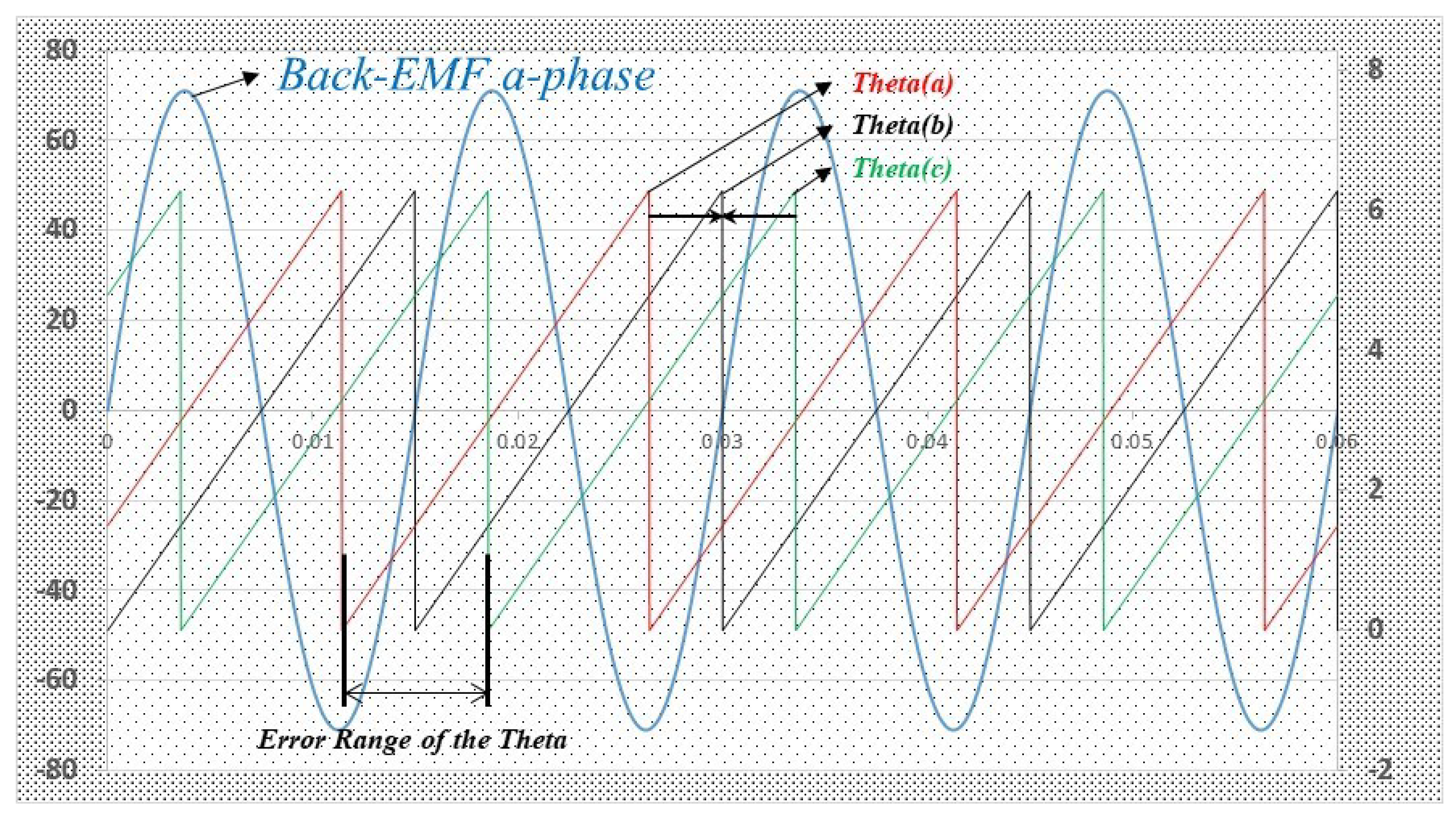

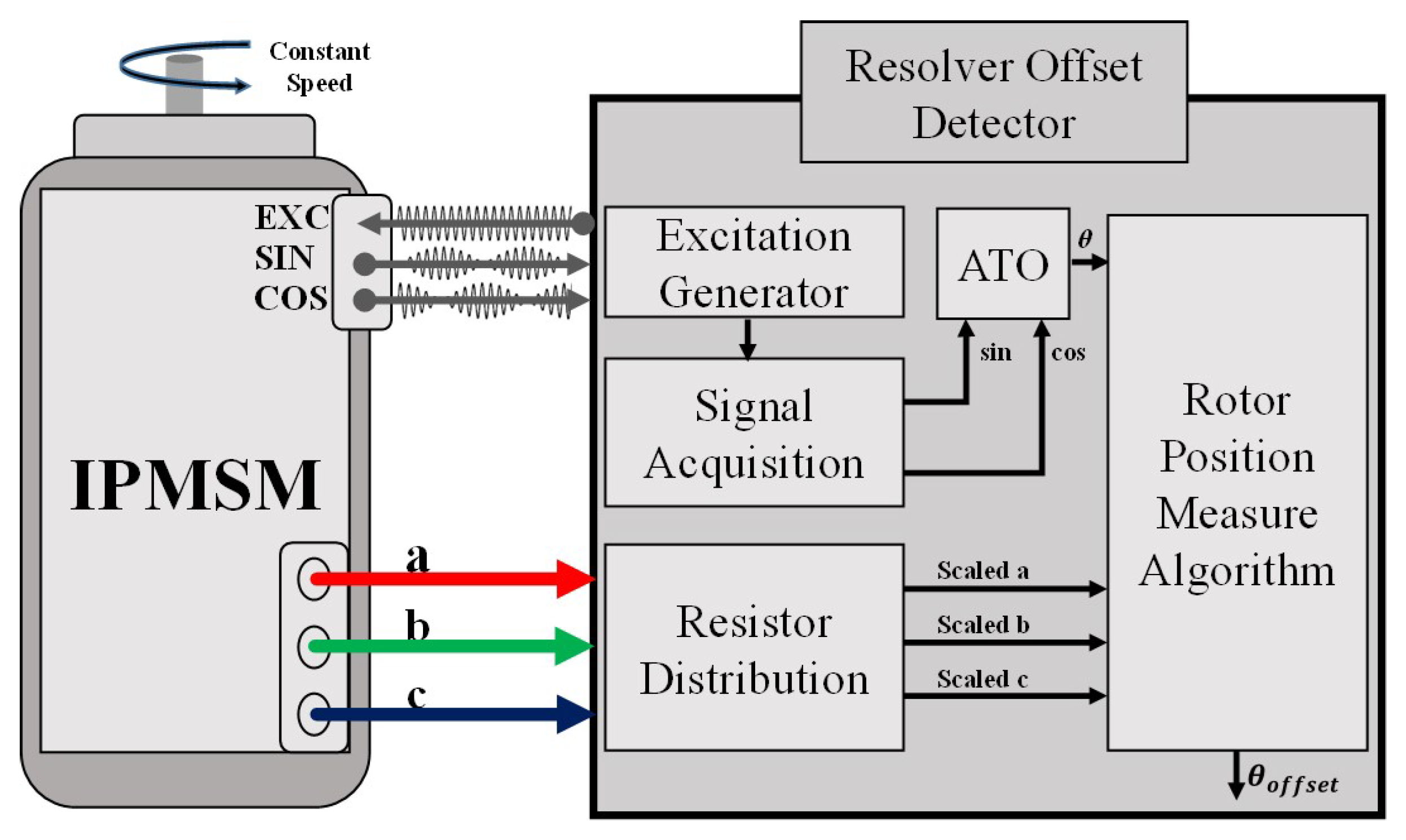


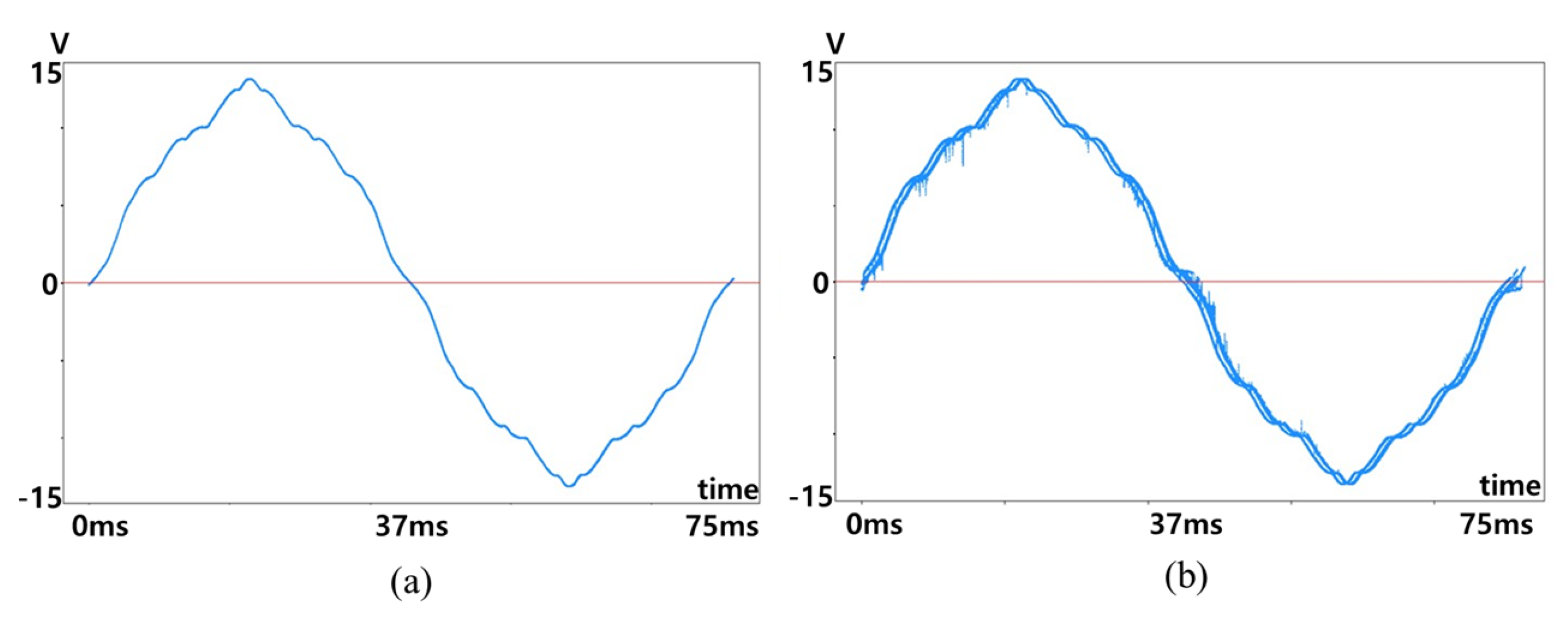
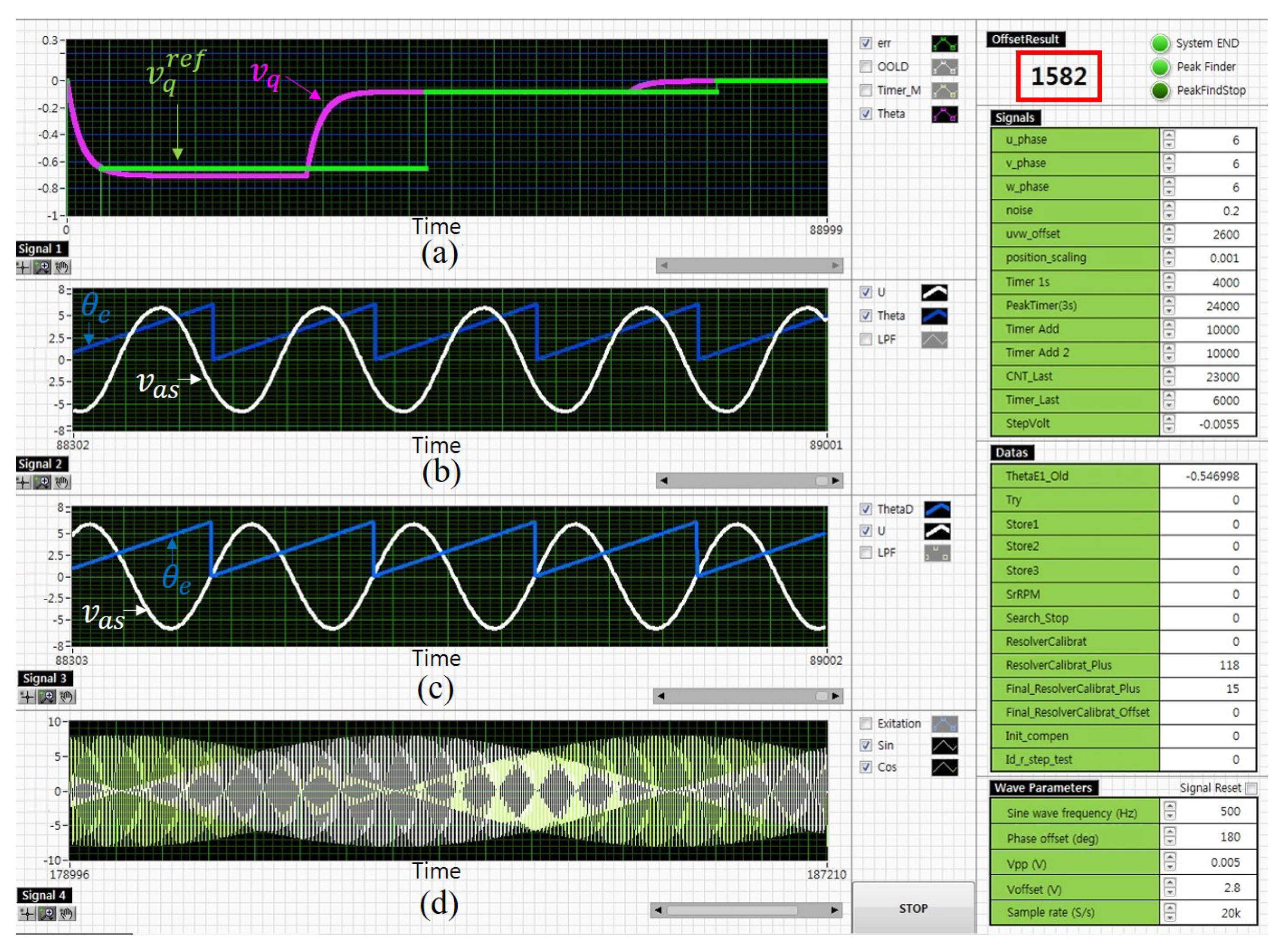

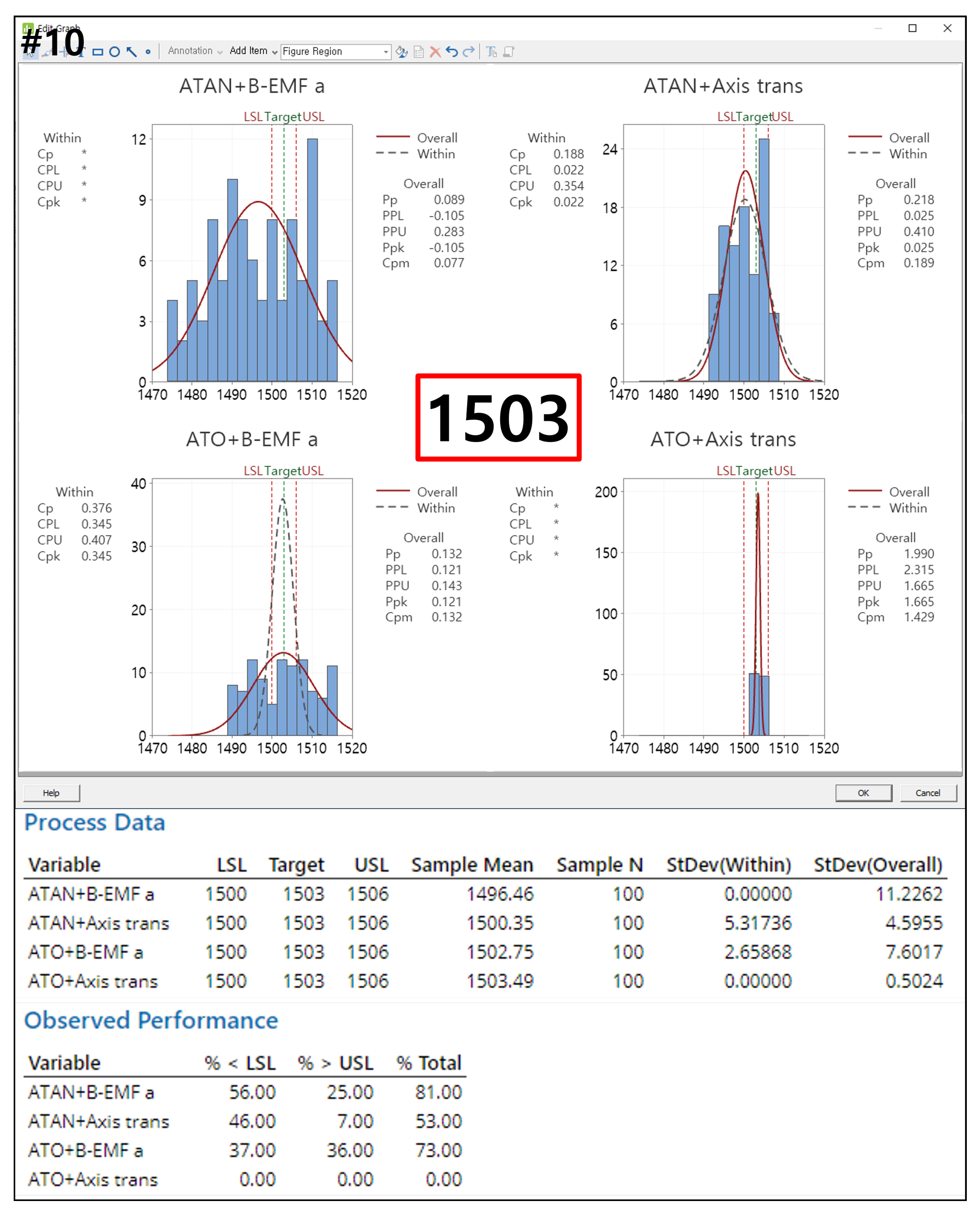
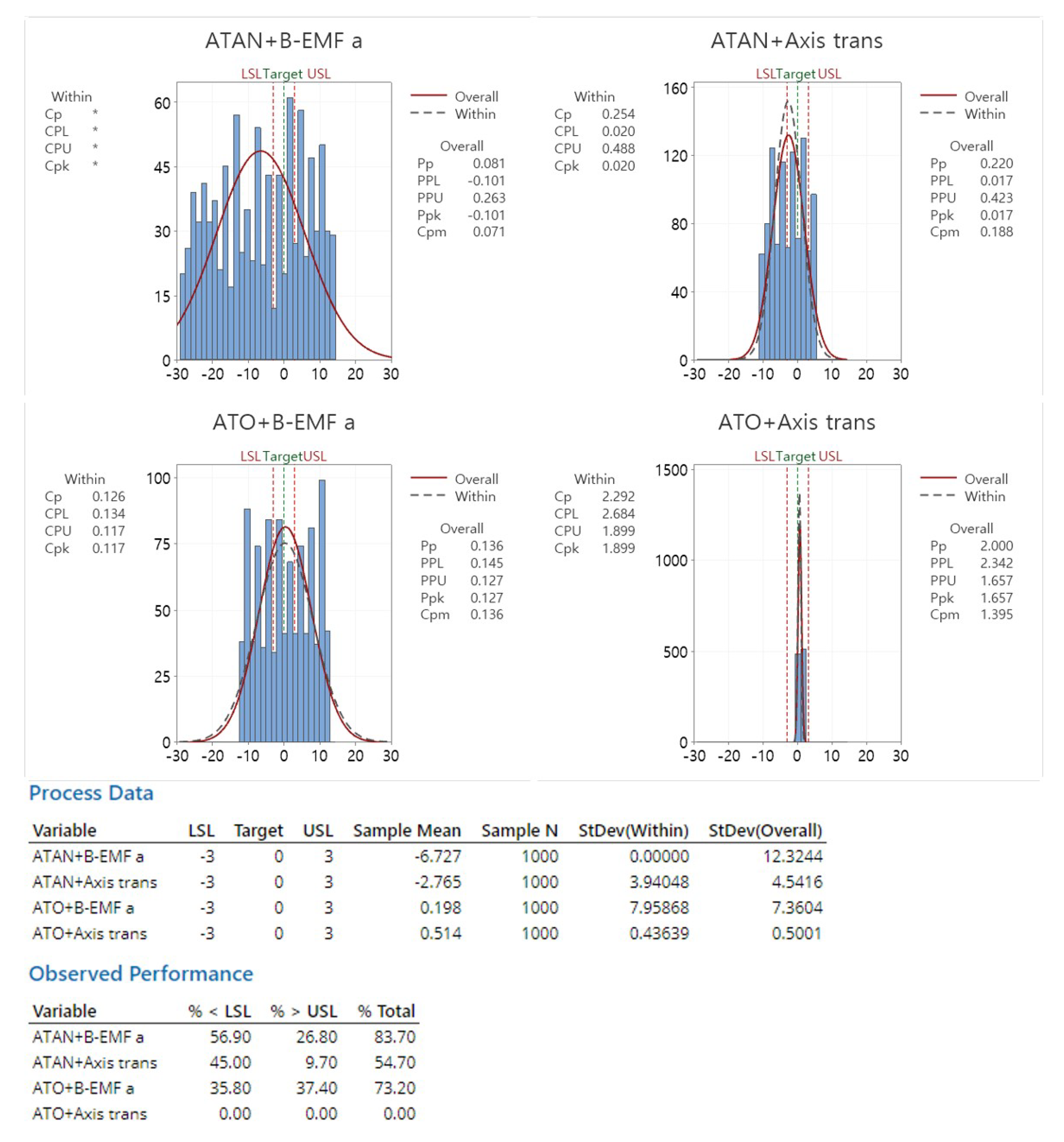
| Parameters | Value | Unit |
|---|---|---|
| Number of IPMSM | 10 | EA |
| speed | 1000 | rpm |
| 42 | V | |
| Measurement of time | 100/1.5 | Period/s |
| Pole pair | 4 | - |
Publisher’s Note: MDPI stays neutral with regard to jurisdictional claims in published maps and institutional affiliations. |
© 2021 by the authors. Licensee MDPI, Basel, Switzerland. This article is an open access article distributed under the terms and conditions of the Creative Commons Attribution (CC BY) license (https://creativecommons.org/licenses/by/4.0/).
Share and Cite
Kim, M.-H.; Kim, D.-Y. Accuracy Improvement in Resolver Offset Detection Based on Angle Tracking Observer with Coordinate Transformation. Electronics 2021, 10, 1643. https://doi.org/10.3390/electronics10141643
Kim M-H, Kim D-Y. Accuracy Improvement in Resolver Offset Detection Based on Angle Tracking Observer with Coordinate Transformation. Electronics. 2021; 10(14):1643. https://doi.org/10.3390/electronics10141643
Chicago/Turabian StyleKim, Mun-Hong, and Do-Yun Kim. 2021. "Accuracy Improvement in Resolver Offset Detection Based on Angle Tracking Observer with Coordinate Transformation" Electronics 10, no. 14: 1643. https://doi.org/10.3390/electronics10141643
APA StyleKim, M.-H., & Kim, D.-Y. (2021). Accuracy Improvement in Resolver Offset Detection Based on Angle Tracking Observer with Coordinate Transformation. Electronics, 10(14), 1643. https://doi.org/10.3390/electronics10141643






